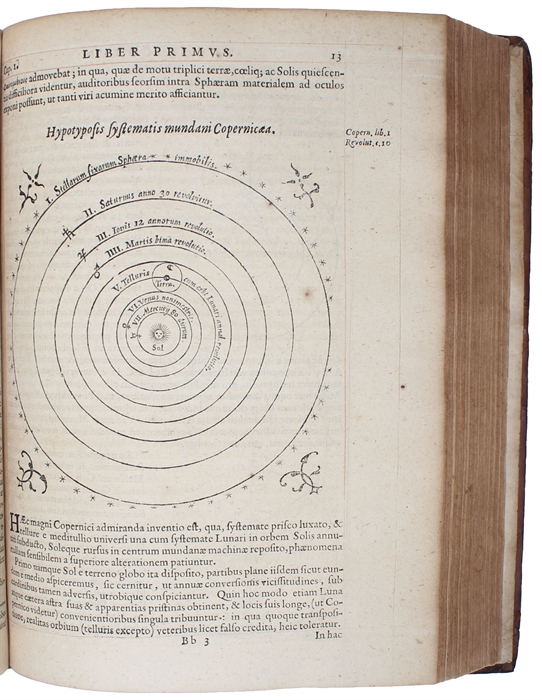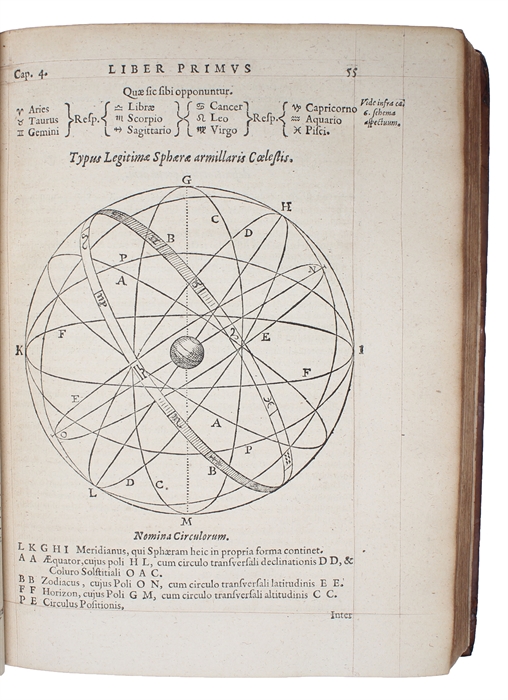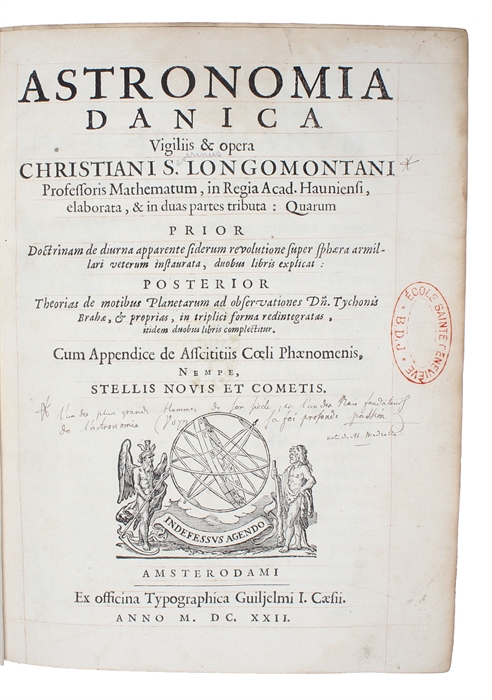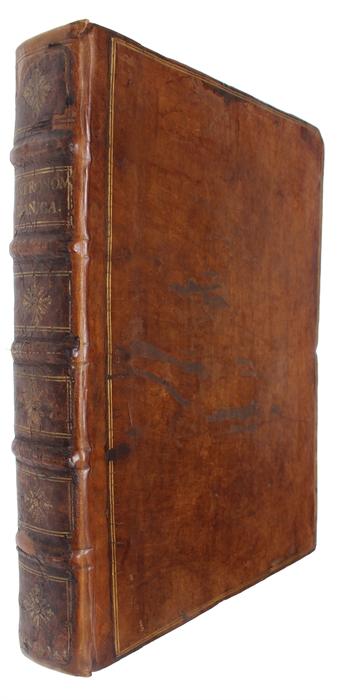THE TESTAMENT OF TYCHO BRAHE
LONGOMONTANUS - i.e. CHRISTIAN SEVERIN. - TYCHO BRAHE.
Astronomia Danica. Vigiliis & opera elaborata, & in duas partes tributa: Quarum PRIOR Doctrinam de diurna apparente sederum revolutione super sphaera armillari veterum instaurate, duobus libris explicat: POSTERIOR Theorias de motibus Planetarum ad observationes Dn. Tychonis Brahe, & proprias, in triplici forma redintegratas, itidem duobus libris complectitur. Cum Appendice de Asscititiis Coeli Phaenomenis, Nempe, Stellis Novis et Cometis.
Amsterdam, 1622.
4to. 18th century full calf with double gilt line-borders to boards and five raised bands to richly gilt spine. Neatly rebacked with 90% of the old spine preserved. Corners very neatly restored. Old owner's inscription (Madrolle) to inside of front board, dated 1840, a small Jesuit stamp to front free end-paper and verso of title-page, and a stamp to blank outer margin of title-page (École Sainte Geneviève). Neat note about the author, in French ("one of the greatest men of his century and one of the founders of astronomy"...), to title-page by previous owner Madrolle. All leaves ruled around the text. A very nice copy with some even browning of some leaves and occasional very light dampstaining or brownspotting. F.*3 with a very neatly closed tear (16), 159, (1); 342 + (8), 44 pp. Woodcut title-vignette, woodcut initials, and numerous woodcut diagrams and illustrations in the text as well as many tables.
Exceedingly scarce first edition of this milestone of astronomy, in which Tycho Brahe's geoheliocentric model is developed empirically and publicly for the first time, to common acceptance for posterity. Longomontanus' magnum opus presented for the very first time Brahe's planetary observations and put them into a systematic whole, presenting the results of the entire program of Brahe. Printed five years before Keplers' "Tabulae Rudolphinae", "Astronomia Danica" constitutes the first work to systemtize Brahe's observations. It will forever stand as a cornerstone of astronomical literature, presenting us with the Tychonic world system.
"When Tycho died in 1601, his program for the restoration of astronomy was unfinished. The observational aspects were complete, but two important tasks remained: the selection and integration of the data into accounts of the motions of the planets, and the presentation of the results of the entire program in the form of a systematic treatise.
Severin, Tycho's sole disciple, assumed the responsibility and fulfilled both tasks in his voluminous "Astronomia Danica" (1622). Regarded as the testament of Tycho, the work was eagerly received and quickly won a place in seventeenth-century astronomical literature. Even after the appearance of Kepler's "Tabulae Rudolphinae" (1627), a rival work that bore the imprimatur of Tycho, Severin's "Astronomia Danica" retained sufficient prestige to warrant reprinting in 1640 and 1663." (DSB) - In fact, a title-issue of the work appeared already in 1633.
For the dissemination of the Tychonic world system, Longomontanus' "Astronomia Danica" was in many ways more important and more influential than both Brahe's own original works and Kepler's "Tabulae Rudolphinae". And not only in the Western world - during the 20th century, research has shown for instance that this work was also a major source for the astronomical reform of China.
Order-nr.: 54159




